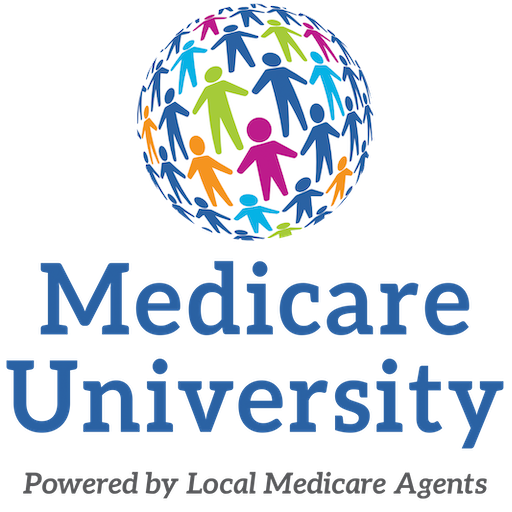
Key Takeaways
- AARP offers discounts on various Medicare health insurance options, including Medicare Advantage Plans, Part D Prescription Drug Plans, and Medicare Supplement Insurance.
- AARP Medicare Advantage Plans bundle Original Medicare coverage with additional benefits and may provide discounted rates for members.
- AARP Part D Prescription Drug Plans can help reduce out-of-pocket costs for medications, with potential discounts for AARP members.
As a senior navigating the complex world of Medicare, you may be looking for ways to save on your health insurance costs. AARP, a well-known advocacy organization for older adults, offers a range of Medicare insurance plans with potential discounts for its members. In this article, we’ll explore the various AARP Medicare health insurance options available, including Medicare Advantage Plans, Part D Prescription Drug Plans, and Medicare Supplement Insurance, to help you make informed decisions about your healthcare coverage and identify potential cost-saving opportunities.
AARP Medicare Advantage Plans: Comprehensive Coverage with Potential Savings
One popular option for Medicare beneficiaries seeking AARP discounts is Medicare Advantage Plans. Also known as Medicare Part C, these plans are offered by private insurance companies approved by Medicare, such as United Healthcare, Aetna, and Humana. AARP Medicare Advantage Plans bundle Original Medicare (Part A and B) coverage with additional benefits, such as prescription drug coverage, vision, dental, and hearing services.
AARP members may have access to discounted rates on these plans, potentially saving them money on their monthly premiums and out-of-pocket costs. It’s essential to compare the available plans in your area, as the specific benefits, networks, and costs can vary by plan and provider.
When considering an AARP Medicare Advantage Plan, pay close attention to factors such as:
- Provider networks: Ensure that your preferred doctors and hospitals are included in the plan’s network.
- Prescription drug coverage: Check that your medications are covered under the plan’s formulary and compare the associated costs.
- Additional benefits: Evaluate the extra benefits offered, such as vision, dental, or hearing coverage, and determine their value to you.
- Out-of-pocket costs: Review the plan’s deductibles, copayments, and coinsurance to estimate your potential out-of-pocket expenses.
By thoroughly assessing these aspects and comparing them to your healthcare needs and budget, you can determine whether an AARP Medicare Advantage Plan is a cost-effective option for you.
AARP Part D Prescription Drug Plans: Saving on Medication Costs
Another area where AARP discounts can help Medicare beneficiaries save is on prescription drug coverage. AARP Part D Prescription Drug Plans, offered through partnerships with insurers like United Healthcare, provide coverage for medications not included in Original Medicare.
These plans can help reduce out-of-pocket costs for prescription drugs, which can be a significant expense for many seniors. AARP members may be eligible for discounted premiums or reduced copayments on these plans, making them a more affordable option.
When evaluating AARP Part D Prescription Drug Plans, consider the following:
- Formulary: Ensure that your prescription medications are covered under the plan’s formulary and review the associated tier levels and costs.
- Pharmacy networks: Check if your preferred pharmacy is included in the plan’s network and compare the costs of using in-network versus out-of-network pharmacies.
- Coverage phases: Understand the plan’s coverage phases, including the deductible, initial coverage, coverage gap (donut hole), and catastrophic coverage, and how they impact your out-of-pocket costs.
- Premium and deductible: Compare the monthly premium and annual deductible of different plans to find the most cost-effective option for your needs.
By carefully reviewing these factors and comparing them to your prescription drug needs and budget, you can determine if an AARP Part D Prescription Drug Plan can help you save money on your medication costs.
AARP Medicare Supplement Insurance: Filling the Gaps in Original Medicare
For those who prefer to stay with Original Medicare but want additional coverage, AARP Medicare Supplement Insurance, also known as Medigap, can be a valuable option. These plans, offered through partnerships with insurers like United Healthcare, help cover some of the out-of-pocket costs not covered by Original Medicare, such as deductibles, copayments, and coinsurance.
AARP members may be eligible for discounted rates on these plans, which can help reduce their overall healthcare expenses. There are several standardized Medigap plans available, each offering a different level of coverage.
When considering an AARP Medicare Supplement Insurance plan, evaluate the following:
- Coverage level: Determine which plan best fits your needs based on the gaps in coverage you want to be filled.
- Premium costs: Compare the monthly premiums for different plans and insurers to find the most affordable option.
- Out-of-pocket costs: Assess the potential out-of-pocket costs associated with each plan, such as deductibles and copayments.
- Insurer reputation: Research the reputation and financial stability of the insurance company offering the plan to ensure reliable coverage.
By carefully weighing these factors and comparing them to your healthcare needs and budget, you can determine if an AARP Medicare Supplement Insurance plan is a cost-effective way to fill the gaps in your Original Medicare coverage.
Evaluating AARP Medicare Insurance Discounts for Your Unique Needs
When exploring AARP Medicare insurance discounts, it’s crucial to assess your unique healthcare needs and financial situation. While these discounts can provide potential savings, the most cost-effective option will depend on factors such as your medical conditions, prescription drug requirements, and budget.
Start by gathering information on the available plans, including Medicare Advantage Plans, Part D Prescription Drug Plans, and Medicare Supplement Insurance. Use resources like the Medicare Plan Finder tool, AARP’s website, and licensed insurance agents to collect data on plan benefits, networks, costs, and member discounts.
Next, evaluate each plan based on factors such as:
- Coverage level: Ensure that the plan covers the healthcare services, medications, and providers you need.
- Out-of-pocket costs: Assess the potential out-of-pocket expenses, including premiums, deductibles, copayments, and coinsurance.
- Network providers: Verify that your preferred doctors, hospitals, and pharmacies are included in the plan’s network.
- Additional benefits: Consider the value of extra benefits, such as vision, dental, or hearing coverage, and determine if they align with your needs.
- Quality ratings: Review the plan’s quality ratings, such as the Medicare Star Ratings, to gauge its performance and customer satisfaction.
Carefully weighing these factors and comparing them to your unique healthcare needs and financial situation helps you make an informed decision about which AARP Medicare insurance discounts offer the best value for you.
Meet the Experts at Local Medicare Agents – LMA Insurance
At Local Medicare Agents – LMA Insurance, we specialize in helping you navigate the complexities of Medicare insurance. Our experienced Medicare agents are dedicated to finding the best plans and discounts tailored to your needs, including exploring AARP discounts on Medicare health insurance options. For personalized assistance and expert advice, trust Local Medicare Agents to guide you every step of the way.
FAQs
What is the difference between AARP Medicare Advantage Plans and Original Medicare?
AARP Medicare Advantage Plans, also known as Medicare Part C, are offered by private insurance companies approved by Medicare. These plans bundle Original Medicare (Part A and B) coverage with additional benefits, such as prescription drug coverage, vision, dental, and hearing services. Original Medicare, on the other hand, consists of Part A (hospital insurance) and Part B (medical insurance) and is provided directly by the federal government.
Can I enroll in an AARP Medicare Supplement Insurance plan if I have a pre-existing condition?
Yes, you can enroll in an AARP Medicare Supplement Insurance plan (Medigap) even if you have a pre-existing condition. During your Medigap Open Enrollment Period, which starts the first month you have Medicare Part B and are 65 or older, you have a guaranteed issue right to purchase any Medigap plan offered in your state, regardless of your health status. Outside of this period, insurers may use medical underwriting to determine your eligibility and premium costs, unless you qualify for another guaranteed issue right.
How can I compare the costs of different AARP Medicare insurance options?
To compare the costs of different AARP Medicare insurance options, consider the following factors:
- Premiums: Look at the monthly premium for each plan, which can vary based on the coverage level, location, and discounts offered.
- Deductibles: Review the annual deductible amounts for each plan, which is the amount you pay out of pocket before the plan begins to cover your healthcare expenses.
- Copayments and coinsurance: Assess the copayments (fixed dollar amounts) and coinsurance (percentage of costs) you’ll be responsible for when receiving healthcare services or purchasing prescription drugs.
- Out-of-pocket maximums: Check the plan’s annual out-of-pocket maximum, which caps your total healthcare expenses for the year.
Use tools like the Medicare Plan Finder or consult with a licensed insurance agent to input your specific healthcare needs and compare the estimated annual costs of different AARP Medicare insurance options. This will help you determine which plans offer the most cost-effective coverage for your unique situation.
Are AARP Medicare insurance discounts available in all states?
AARP Medicare insurance discounts are available in most states, but the specific plans and discount amounts may vary by location. This is because the availability and pricing of Medicare Advantage Plans, Part D Prescription Drug Plans, and Medicare Supplement Insurance can differ from state to state based on factors such as local healthcare costs, provider networks, and state regulations.
To find out which AARP Medicare insurance discounts are available in your state, visit the AARP Medicare website and enter your zip code or contact a licensed insurance agent who can provide you with information on the plans and discounts specific to your area.
How do I enroll in an AARP Medicare insurance plan?
To enroll in an AARP Medicare insurance plan, follow these steps:
- Determine your eligibility: Ensure that you are enrolled in Original Medicare (Part A and B) and meet any additional eligibility requirements for the specific plan you are interested in.
- Research and compare plans: Use resources like the Medicare Plan Finder, AARP’s website, and licensed insurance agents to gather information on the available plans, their benefits, networks, costs, and discounts.
- Choose a plan: Select the AARP Medicare insurance plan that best fits your healthcare needs and budget.
- Enroll during the appropriate period: You can enroll in a plan during your Initial Enrollment Period (IEP), the Annual Election Period (AEP), or a Special Enrollment Period (SEP) if you qualify.
- Complete the application: Fill out the enrollment application, either online, by phone, or with the help of a licensed insurance agent. Provide the necessary information and pay any required premiums.
Once your application is processed and approved, you will receive confirmation of your enrollment and can begin using your new AARP Medicare insurance coverage.

